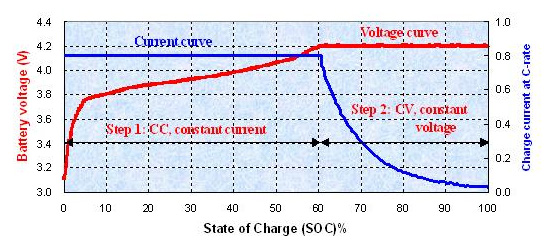|

By comparison with other rechargeable battery systems, rechargeable Lithium-ion batteries provide you with better performances, such as higher capacity, higher energy density, no memory effect, longer cycle life and faster charging. In addition, lithium-ion batteries have less self-discharge rate, only 5~8% self-discharge of capacity per month. Therefore, lithium-ion battery packs would offer you longer talking hours, smaller size, lighter weight and shorter charging time.
Charging Technology
Unlike other rechargeable batteries, lithium-ion batteries request a two-step charging process. The first charge step is to charge a lithium-ion battery with constant current up to its upper limit voltage of 4.2V. The second step is to keep this upper limit voltage as a constant and charging the lithium-ion battery with a current taping down to 1~5% of 1C. Therefore, the termination of charging process for a lithium-ion battery is determined by the current, but not by the voltage. A professional charger is requested for completing the two-step charging process for lithium-ion batteries. The following figure illustrates an example of charging process for lithium-ion batteries. At the first step, your lithium-ion battery receives about 60% of energy by constant current charging. At the end of the second step, your lithium-ion battery would reach the 100% of SOC, that means fully charged.

|
